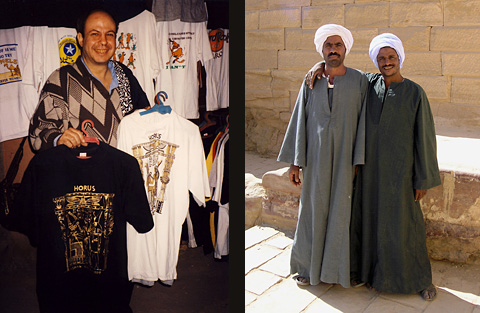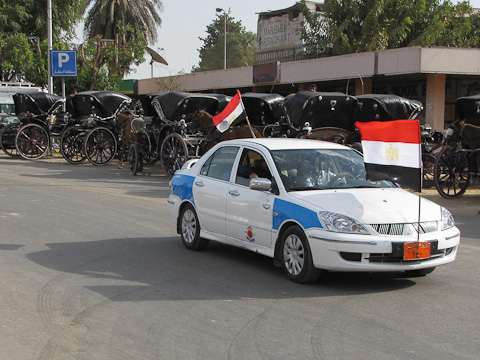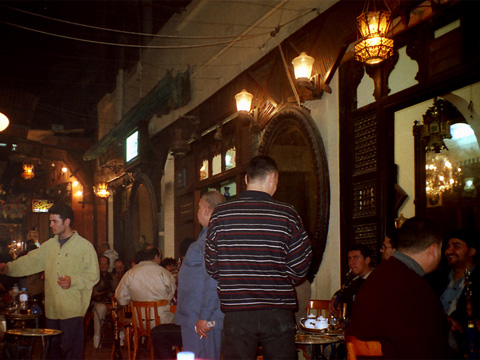Few places on earth capture the imagination of both young and old the way Egypt does with its parched desert landscape dissected by its one eternal river. The Nile flows from beyond Egypt’s southern border some 1500km through high cliffs and plains before the river valley splits into the many tributaries of the Delta. To either side of the river are baked stretches of desert – the ‘Red Land’ or ‘deshret’ of the ancient Egyptians which formed a natural barrier against invasion for thousands of years. The ‘Black Land’ ‘kemet’ is the river valley itself, a life-giving ribbon of cultivated land which never extends more than a few kilometres from the river and was fertilised by each year’s inundation until the building of the Aswan High Dam in the 1960s.
Because the Nile Valley was the most populated area in ancient times, this is where the bulk of remaining Egyptian monuments are situated and where most tourists visit. The popular way to get to Egypt is to fly into one of the main cities – Cairo, Luxor or Aswan, whose airports have recently been modernised and extended. For those who want a more leisurely holiday the Red Sea coast is becoming increasingly popular, a diver’s paradise with its coral reefs and wide sandy beaches in resorts such as Sharm el-Sheikh and Hurghada. There are package tours to suit every taste and every pocket. It has to be said that the Nile Valley is by no means the only monumental area and ‘specialist trips’ are now being organised to the Oases of the Western Desert as well as the Eastern Desert and Sinai.
Many visitors opt for a cruise. These flat-bottomed riverboats, ‘floating palaces’ which may be merely luxurious or blatantly ostentatious, ply the Nile from Luxor to Aswan and back weekly. The long cruise from Cairo to Aswan is no longer available at the present time for security reasons, but on the shorter cruises the visitor has the opportunity to pack about three weeks worth of holiday into a week. Cruises are usually accompanied by Egyptologists who will guide you around the sites in a whirlwind tour of knowledge and wit. While catching your breath between visiting monuments and eating huge meals there is time to just relax and watch the banks of the Nile, hardly changed since ancient times, silently float by. There are now also cruises available on Lake Nasser which take in the Nubian monuments.
For those who prefer to travel alone or with friends, there are many small Egyptian-owned hotels at extremely reasonable prices as well as the large five star tourist hotels. Travel from one city to another is comfortable by either air, train or air-conditioned coach.
Climate
A hot, dry country, the temperature of Egypt varies from North to South. Most tourists visit the country in its ‘high season’ – October to March. Summers are extremely hot, especially in Upper Egypt, where temperatures can easily reach up to 50 C (122 F) in June and July. The average midwinter temperature in Aswan is usually around 25 C (77 F) and 10 C (50 F) in Cairo. In the winter as soon as the sun has set it can feel very cold because of the contrast in temperature. Rainfall is quite rare in Upper Egypt, but you can expect a little rain in the winter months in Cairo and the Delta. A strong dry wind known as the Khamsin (literally ‘fifty’) blows in March or April for around 50 days from the Western desert, spreading fine particles of sand over everything it touches.
For current weather conditions in Egypt see Weather Online
Time Zone and DST
Egypt is two hours in advance of Greenwich Mean Time (GMT +2) and operates Daylight Saving Time (+1 hour) from the last Friday in April until the last Friday in September.
Language
Language
Arabic is the official language in Egypt and the majority of the population are of Muslim faith. Egyptian Arabic is a separate dialect from the language spoken in other Arab countries with standard Arabic as the written form used for newspapers and literature. This will usually be understood in most places but there is a colloquial dialect or ‘street Arabic’ which varies throughout Egypt. The difference in speech between Cairo and Luxor is very noticeable. It has been said that the three most useful words in Egyptian are:
I : insha’allah (if it is the will of God)
B : bukra (tomorrow)
M : ma’lesh (it doesn’t matter)
B : bukra (tomorrow)
M : ma’lesh (it doesn’t matter)
These three words illustrate the pace of life in Egypt – where nothing is important enough to need to be done quickly!
But don’t worry. Egyptians have an amazing ear for languages and most people who come into contact with tourists will speak English and/or several other European languages. Even before you speak your nationality will be accurately guessed by the way you dress and walk. In the most denselypopulated tourist areas children from two years old will know how to say ‘welcome to Egypt’, ‘what’s your name’, ‘baksheesh’, ‘pen’, and ‘give me money/sweets/cigarette’ in lots of languages! The government is now encouraging foreign languages to be taught in schools and older children love to practice their skills








































































